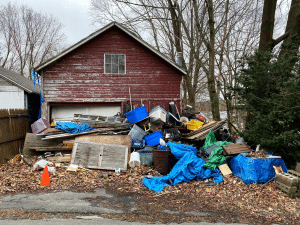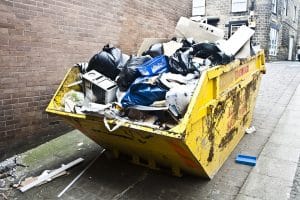Backyard cleaning can be a huge chore.
If you’ve been putting off cleaning your yard, you’re not alone. From overflowing trash cans in the yard to weeds, dead leaves, broken appliances and animal droppings, so much can pile up that it can seem overwhelming to get rid of it all.
While you can call up junk removers to remove yard debris before you start, you should adopt good yard maintenance practices to prevent your yard from becoming a nuisance in the first place.
Contents
How to Maintain Your Yard
Guide to Mowing Grass
Mowing the grass in your lawn is one of the most efficient and effective ways to keep it looking well-maintained. However, mowing doesn’t mean just taking a lawnmower and going to town on the lawn whenever you feel like it.
For starters, do not mow your lawn first thing in the morning. Morning dew makes the grass wet and mowing wet grass stresses both the grass blades and your lawnmower. Begin with your lawnmower at its highest setting and only slice off the top one-third of grass blades to avoid scalping the lawn.
Mow again when the grass is about 3 inches in height. Remember to sharpen the lawnmower’s blade before the next round as you want your grass to have clean even cuts. Mow in different directions to prevent ruts from forming in your yard.
Prune Before Spring Arrives
You should get to pruning trees, shrubs and bushes as winter ends. Spring will bring with it new buds, leaves and flowers and make your job very difficult. Remove all unwanted lower branches from evergreen shrubs and trees before they start blooming again. Here is a list of trees and shrubs to prune during and towards the end of winter:
- Crabapples
- Bradford pears
- Poplar
- Spruce
- Sumacs
- Bald cypress
- Junipers
- Cherries
- Honey locust
- Plums
- Hydrangea
- Fruit Trees
- Roses
- Beauty berries
- Mallow
- Camellias
- Glossy abelia
- Euonymous
- Barberries
Don’t Go Overboard With Raking Leaves
There’s no need to rake away each and every leaf from your yard. Fallen leaves are a great source of organic fertilizer for your yard’s soil and also ideal for compost piles. Insects that help with pollination take shelter under leaf piles.
However, you also don’t want mold in your backyard. It’s best to remove yard debris and huge layers of leaves to allow sunlight to reach the yard and prevent decay. Remember never to rake when the soil is wet. Wait for warmer temperatures to begin raking.
Keep Your Yard Weed-Free
Weeds should be dealt with in late winter or early spring. In summer, they will develop stronger roots and be more troublesome to pull out. To prevent weeds from growing you can try some of the following:
- Stick to the grass mowing practices mentioned earlier
- Do not use fertilizers in the spring; let grass clippings and leaves do the job
- Avoid over-watering or under-watering your lawn
- Apply a pre-emergent herbicide during spring to prevent weed seeds from germinating
- Apply a post-emergent herbicide fertilizer if you see weeds starting to grow
Summary:
A well-manicured lawn is a sight to behold. To clean and maintain your yard, remember to remove yard debris, mow grass carefully, don’t rake too much and deal with weeds aggressively.




